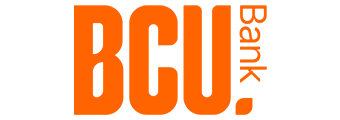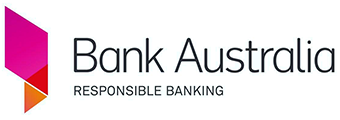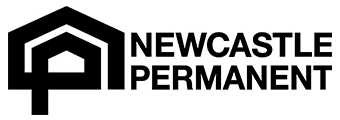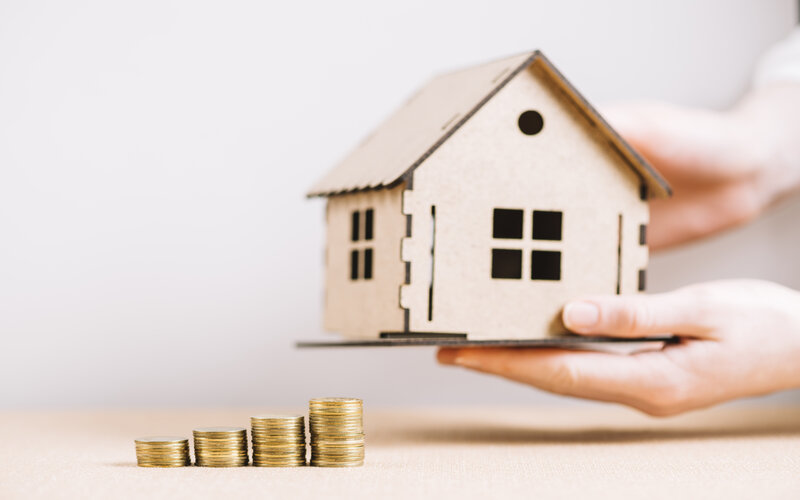- What is considered 'low income' in Australia?
- Getting a mortgage on a low income
- Tips on buying a house if you have low income
- Additional costs of home ownership
Over the past two years, the housing boom rocked Australia's property market. The national median house price tipped over $1 million earlier this year, with Canberra, Sydney and Melbourne all joining the $1 million club according to Domain. House prices rose 27.5% throughout 2021 according to the ABS - the strongest annual growth since 2003.
For existing homeowners and investors, this is great news. But if you’re trying to buy your first home, it’s pretty disheartening - especially if you’re on a lower income.
According to Domain, the median house values as at December 2021 are as follows:
|
City |
Annual change |
Median value |
|---|---|---|
|
Sydney |
33.1% |
$1,601,467 |
|
Melbourne |
18.6% |
$1,101,612 |
|
Brisbane |
25.7% |
$792,065 |
|
Adelaide |
27.5% |
$731,547 |
|
Perth |
7.5% |
$612,348 |
|
Hobart |
34.6% |
$752,110 |
|
Darwin |
30.1% |
$645,487 |
|
Canberra |
36.6% |
$1,178,364 |
Source: Domain
This means putting down a deposit on your average $1.6 million house in Sydney would require a $320,000 deposit for borrowers targeting the oft-recommended 80% loan-to-value ratio (LVR). Saving up this amount can seem like an impossible task for anyone, but particularly those on low incomes.
But it doesn’t have to be. With a bit of grit, discipline and nous, people on low or single incomes can buy a home in Australia.
What is considered ‘low income’ in Australia?
There’s no real definition for what’s considered a low income, at least not in Australia. But you could go off the ATO’s rules for tax offsets. It classes a taxable income of $37,500 or less as a low income eligible for a $700 tax offset, so if you earn less than this amount then you can probably consider yourself to be a low-income earner. This is considerably less than the nationwide median employee earnings of $62,400 a year, according to the ABS.
Obviously, earning $37,500 or less in a year can present issues with buying a home in today’s property market. It doesn’t make it impossible, but it does make it considerably harder.
How to get a mortgage on a low income
There is no written rule saying “reject people who earn less than $XX,XXX per year” in the training manual of every lending specialist who works for a bank or lender. Ultimately, whether you're approved depends on your borrowing power and how much you're looking to borrow - your income is just one piece of the puzzle.
Having a lower income does mean they’ll likely take a closer look at your application and go through it with a fine-toothed comb, and can increase your chance of rejection for some of the top-tier home loan products.
Some lenders have specific products tailored towards low-income earners or people on single incomes.
1. Prove you can pay off the loan
Serviceability is arguably the most important factor when a bank is deciding whether or not to accept your home loan application. Serviceability refers to your ability to ‘service’ (repay) the loan. A standard home loan assessment will see the lender compare the expected monthly repayments against your disposable income. An inability to comfortably repay the mortgage based on the expected payments will likely see your application rejected.
To help prove you’ll be able to pay off the loan and boost your chances of being accepted, you could do the following:
- Find a loan with a low interest rate this will make a huge difference to your repayments
- Find a home with a reasonable asking price
- Clear all of your credit card debts and loan obligations
- Clean up your outgoing expenses: that means stop buying so much UberEats, cut down on online shopping and stop using Afterpay!
- Demonstrate strong savings habits: having both a sizable savings account balance and regular transfers to a savings account shows the bank that you’ll have something to fall back on in bad months, and that you’re good with money
- Declare everything: don’t hide any of your nasty secrets from the bank. They’ll probably find out eventually and, if they do, you could be in trouble.
2. Get your credit score in order first
Having a good credit score will massively increase your chances of getting approved for a good loan, as your credit score is a summary of your borrowing dependability. Based on the different credit agencies used, the credit score bands are as follows:
| Equifax | Experian | illion | |
|---|---|---|---|
| Excellent | 833-1,200 | 800-1,000 | 800-1,000 |
| Very good/Great | 726-832 | 700-799 | 700-799 |
| Good | 622-725 | 625-699 | 500-699 |
| Average/Fair | 510-621 | 550-624 | 300-499 |
| Below average/weak | 0-509 | 0-549 | 1-299 |
Ideally, you want to be sitting in at least the ‘good’ range – the average credit score in Australia is pretty rubbish so try to be better than that.
Prior to applying for your home loan, you could try to improve your credit score over time by doing the following:
- Making credit card and mortgage repayments consistently on time
- Making bill and rent repayments on time (also consistently)
- Paying off debts, consolidating them into a single loan or using a balance transfer
- Lowering your credit card’s limit
- Not maxing out credit cards – keep your spending to 30% of your credit limit
- Not applying for too many cards and loans
3. Look within your means
The median national house price currently sits at just over $1 million. But did you know this median value can decrease when you look beyond the capital cities to regional areas or even just beyond the city boundaries?
In addition to being cheaper, regional areas are also recording very high levels of annual and quarterly growth at the moment.
Take Bega Valley, NSW for example. This regional town recorded 91.6% house price growth throughout 2021 with a current median house price of $795,000 - more than half of Sydney's median house price of $1.6 million according to Domain.
Of course, not everyone can just uproot their lives and move to a regional area, and some may just not want to leave the city. But this goes to show that there’s value to be found beyond the capital cities. And besides, you can always rentvest.
Bonus tips on how to buy a house with a low income
Here are some bonus strategies you could employ to fast track your way to owning a home.
1. You can buy with a smaller deposit
It’s generally recommended to build up a deposit of at least 20%, as doing so means you can avoid paying Lenders Mortgage Insurance (LMI). LMI is a cost tacked on by the lender to protect themselves against losses, which they deem as more likely if you don’t have a 20% deposit.
The cost of LMI varies based on your house price and the loan-to-value ratio (LVR) you have. Using our LMI calculator, we generated the following estimates:
| Estimated property value | 95% LVR | 90% LVR | 85% LVR |
|---|---|---|---|
| $200,000 | $6,137 | $2,574 | $1,299 |
| $400,000 | $15,428 | $6,552 | $3,390 |
| $600,000 | $31,008 | $9,828 | $5,100 |
| $800,000 | $41,344 | $14,400 | $6,800 |
| $1,000,000 | $51,680 | $20,790 | $10,115 |
Having a smaller deposit means you may have to pay thousands of dollars in LMI, so why on Earth would this be a good thing? Well, there are a couple of reasons why you might still be happy with paying LMI:
- Saving up for a 20% deposit takes time, and in that time the cost of property could increase by more than the cost of LMI.
- In the time it takes you to save up the full 20% deposit, you might miss out on buying that one particular house you’ve always dreamed of buying that’s rarely on the market. If it’s your dream house that may never be for sale again, LMI might seem like a small price to pay if that’s what it takes to secure the home.
Bear in mind that you might also have to cop a slightly higher interest rate with a lower deposit, but this isn’t always the case.
So if saving a 20% deposit is a bridge too challenging for you to cross, then you could consider buying with less.
Variable home loans for low deposit
| Lender | Home Loan | Interest Rate | Comparison Rate* | Monthly Repayment | Repayment type | Rate Type | Offset | Redraw | Ongoing Fees | Upfront Fees | Max LVR | Lump Sum Repayment | Extra Repayments | Split Loan Option | Tags | Features | Link | Compare | Promoted Product | Disclosure |
|---|---|---|---|---|---|---|---|---|---|---|---|---|---|---|---|---|---|---|---|---|
5.49% p.a. | 5.50% p.a. | $2,836 | Principal & Interest | Variable | $null | $null | 95% | |||||||||||||
5.79% p.a. | 5.81% p.a. | $2,931 | Principal & Interest | Variable | $0 | $195 | 95% | |||||||||||||
5.79% p.a. | 5.82% p.a. | $2,931 | Principal & Interest | Variable | $0 | $300 | 95% | |||||||||||||
6.09% p.a. | 6.37% p.a. | $3,027 | Principal & Interest | Variable | $295 | $0 | 95% | |||||||||||||
6.15% p.a. | 6.15% p.a. | $3,046 | Principal & Interest | Variable | $0 | $0 | 95% | |||||||||||||
6.24% p.a. | 6.59% p.a. | $3,075 | Principal & Interest | Variable | $0 | $0 | 95% | |||||||||||||
6.29% p.a. | 6.31% p.a. | $3,092 | Principal & Interest | Variable | $0 | $210 | 95% | |||||||||||||
6.24% p.a. | 6.28% p.a. | $3,075 | Principal & Interest | Variable | $0 | $0 | 95% | |||||||||||||
6.64% p.a. | 7.03% p.a. | $3,207 | Principal & Interest | Variable | $395 | $350 | 95% | |||||||||||||
6.49% p.a. | 6.87% p.a. | $3,157 | Principal & Interest | Variable | $0 | $0 | 95% | |||||||||||||
6.69% p.a. | 6.72% p.a. | $3,223 | Principal & Interest | Variable | $0 | $350 | 95% | |||||||||||||
6.69% p.a. | 6.93% p.a. | $3,223 | Principal & Interest | Variable | $248 | $350 | 95% | |||||||||||||
6.84% p.a. | 6.84% p.a. | $3,273 | Principal & Interest | Variable | $0 | $0 | 95% | |||||||||||||
7.24% p.a. | 7.61% p.a. | $3,407 | Principal & Interest | Variable | $null | $400 | 95% | |||||||||||||
7.24% p.a. | 7.61% p.a. | $3,407 | Principal & Interest | Variable | $10 | $150 | 95% | |||||||||||||
7.34% p.a. | 7.36% p.a. | $3,441 | Principal & Interest | Variable | $null | $400 | 95% |
2. You can use a guarantor
It’s technically possible to get a 100% LVR (0% deposit) AND avoid paying LMI if you apply for a home loan with a guarantor – that’s someone (often a parent) who agrees to take responsibility for repaying the home loan if you fail to make the repayments. Guarantors use their own property as a security for the loan, which obviously represents a big risk for them.
Not everyone has this option available to them, but they’re a popular option for those who do, especially if they have low incomes or are first home buyers. And speaking of first home buyers…
3. You can use the first home owner’s grant
First home buyers can get help from state governments in saving for their deposit in the form of the First Home Owner Grants (FHOG), which provide both a cash bonus and stamp duty concessions that vary based on the buyer’s state. First home buyers can get bonuses of up to $26,000 depending on whether they’re buying an established home or building a new one, which can make a real difference to saving for a house deposit.
Read our article on the different First Home Owner Grants to see how much you and your partner could be eligible for.
4. Use the government housing loans for low income earners
Outside of the FHOG and First Home Loan Deposit Scheme (FHLDS), low income earners can also qualify for various special government schemes intended to help them buy a home. Although you'll still have to prove you can service the loan, and it will depend on the state you live in, the following government housing loans are available for low income earners:
Western Australia – Keystart & shared equity loans
- Keystart: A low deposit home loan (as little as 2%, 10% for regional areas) with no LMI, the KeyStart loan lets certain qualifying residents buy. It has helped more than 115,000 Western Australians enter the market.
- Shared equity: through KeyStart you can also get a shared equity loan, which lets you borrow with as little as 2% for a property that is co-owned by the Housing Authority.
These loans carry higher interest rates than the average mortgage.
Queensland - Queensland Housing Finance Loan
The Queensland Housing Finance Loan is available for Queenslanders who are able to buy or build their home, but can't get finance from a bank or lender. As long as you have an income below $141,000 per annum (among other requirements) this loan can let you borrow with a deposit as small as 2% (no LMI) with a variable or fixed interest rate.
You will need to pay legal fees, stamp duty and registration fees.
South Australia - HomeStart Finance
South Australia offers the HomeStart Finance loan, a scheme that lets applicants buy LMI-free with deposits as small as 3%. The initial repayments are based on what you can afford, not any set interest rate.
Victoria - Homebuyer Fund
The Victorian Government's Homebuyer Fund is a shared equity scheme. Eligible homebuyers must have a 5% deposit to receive up to a 25% contribution towards the purchase price. In exchange for the contribution, the government would own said share of the home. When it came time to sell, the Fund would share any gains in the property's value.
5. Look beyond the traditional banks for a loan
Once you’ve got your deposit ready and you’ve cleaned up your finances, it’s time to get a home loan. It’s through your home loan where the biggest savings will be made – the right loan can save you tens if not hundreds of thousands in interest over the loan term.
There are home loan rates as low as 1.75% (higher comparison rate) which is very cheap, but not everyone can qualify for these rates. They sometimes have tighter restrictions on who’s eligible, which is one advantage the big banks have, as they’re more accepting of a broader range of people.
But that doesn’t mean you shouldn’t try your luck with some of these lower rate home loans. If you’re in doubt, speak to a mortgage broker who can find you a cheaper loan.
Remember the additional costs of home ownership, and factor them in
It’s crucial you remember these other costs besides just the deposit and loan repayments:
- Stamp duty on the house (use an online calculator to find out how much you pay)
- Transfer and registration fees
- Home loan fees (establishment fees, settlement fees, ongoing fees)
- Property valuation fees, conveyancing fees
- Building and pest inspection fees, removalist fees and more.
These fees and payments aren’t talked about nearly as much as the deposit and loan repayments are, but they’re just as important, and can make or break your application since they can be thousands of dollars extra.
Savings.com.au’s two cents
Don’t give up on your dream of owning a home just because you consider yourself to be on a low income. The home buying process is a multi-faceted process with many different paths you can take, so there are options available for people of all incomes and situations.
Try to follow these key points:
- Look beyond the areas within capital cities – there’s great value to be found elsewhere
- Temper your expectations and look for prices below the average
- Clean up your credit score and finances before applying – that means no more debts
- Start a savings regime and stick to it – this will help your application
- Consider using a lower deposit, a guarantor, the first home owners grant or a combination of the three
- Do a thorough comparison of loan providers
And remember, renting is often much cheaper than home ownership, so it can make sense to continue to rent, even if it’s not as ideal as owning.
Article originally published by William Jolly on 17 May 2021, updated by Rachel Horan on 11 April 2022
Photo by Andrew Tanglao on Unsplash

Ready, Set, Buy!
Learn everything you need to know about buying property – from choosing the right property and home loan, to the purchasing process, tips to save money and more!
With bonus Q&A sheet and Crossword!

















 Bea Garcia
Bea Garcia
 Denise Raward
Denise Raward
 Harry O'Sullivan
Harry O'Sullivan
 Alex Brewster
Alex Brewster
 Harrison Astbury
Harrison Astbury

